Things have changed around the Jackson house since we adopted Britney and Shadow way back in late February. Adjusting to life with two rambunctious Lab-mix puppies has been something of a challenge. These two pups are high energy and they love to play. They wrestle with each other nonstop. Getting and keeping their attention simultaneously can be next to impossible. They seem to find new and unique ways to get into mischief each and every day.

But then there are the quiet times—fleeting moments after the puppy-storm has subsided—when for a brief few minutes everyday the Britney and Shadow settle down to catch their breath. These are the moments when they will look you in the eyes and tell you everything you need to know about how they feel about being a part of your family.
Britney in particular is a master of the puppy-dog look. She will gaze deeply into your eyes, give you a few air licks, and melt your heart in the process. Of course, she usually follows up by lunging at your face and putting her wet snout in one of your too-slow-to-blink eyes. Admittedly, this does ruin the moment a bit, as wet dog nose to the cornea is surely one of the worse feelings in the world.

Dogs are simple creatures who drink deeply from the well of life. Everything new is something to get excited about… as is everything old and ordinary, for that matter. Dogs waste no time with sorrow when happy will do. The pure joy they derive from something as simple as just running flat out is inspiring. It’s one of my favorite things about having them around. The pups are a constant reminder of the importance of joy and love. Plus I really enjoy watching them trying to work their mischief.

Britney and Shadow are right around ten months old now. They have had their surgeries and are microchipped. For those who haven’t guessed yet—we are keeping them. For better or for worse these pups are now a permanent part of the Jackson family!
It has been very strange not working on the website every night as has been the norm for nearly five years now. But the time I used to dedicate to writing articles and editing photographs now goes to walking and caring for the pups.
On most days I take them for their morning walk around the neighborhood, and then an even longer walk in the evening. The kids manage the dog’s activities during the day, so that means a mid-day walk or a lot of time playing in the backyard or both. The goal of all of this activity is to make sure Britney and Shadow have a good outlet for their puppy-energy. The aim is to tucker them out enough so that they don’t have the reserves left for getting into trouble.
As it turns out, walking the dogs multiple times a day is very, very tiring—for me! And neither the pup’s behavior nor mine has really improved as a result of it!

The bottomline is that I’m just not getting out in the field as much as I used to. But the change in my routine that the dogs have wrought, has allowed me the opportunity to redirect my attention to wildlife living in and around my home and neighborhood. Over the last several months I have been making a point to take notice of wildlife I ordinarily might have discounted. During this time I have made more than a few interesting observations, some of which I will share here with you. This is not wildlife I’ve scouted out in some remote and forgotten corner of Dallas County, this is real honest to goodness urban wildlife, and I hardly know where to begin…
The drought busting rains of this past spring might be a good place to start. After a couple of long years without much rain to speak of, we finally started to get a little relief in mid-April. But in North Texas it tends to be either feast or famine when it comes to precipitation, and by the end of May most of us had had all the rain we could stand. Reservoirs and lakes that had been dangerously low, were now overfull. The Trinity River and many of its tributaries had over-banked in many places.
The talk in the local media was that the flood condition would push snakes and other reptiles into our neighborhoods as they attempted to escape the rising water. I’m a little skeptical about that claim, but I did have a few interesting encounters of the reptilian variety while out walking the dogs.
One night we got a little tangled up with this Blotched Water Snake as it tried to cross the trail just as we were passing by. Another evening I came across an impossibly small Common Snapping Turtle—just a month or so from being a hatchling. This little guy was wandering away from the creek of his birth in search of a new body of water to call home. We helped him get there.




The flood conditions offered up some other unique and unusual situations. Case in point is this mother Mallard and her brood of roughly a dozen fluffy ducklings. A backed up drainage ditch and flooded parking lot just outside our neighborhood served as the nesting location of choice for this female Mallard. I’m not sure what the ultimate outcome was for this family unit, but the pool of water stayed intact more than long enough for the ducklings to have survived.

Down by the neighborhood creek we discovered this Nutria den carved into the banks. Most mornings and evenings the Shih Tzu-sized semi-aquatic mammal can be found creekside feeding on cattail roots, but it is usually too dark for pictures at these times.


A Belted Kingfisher can often be found nearby watching the creek for small fish to eat. The kingfisher is sometimes joined in this endeavor by a similar-minded Green Heron. Barn Swallows frequent the margins between the mowed and non-mowed areas along the creek’s course. There they fly “nape of the earth” feeding on small winged insects hovering just above the grass.




Some fascinating wildlife observations took place just right outside my front and back door. In one dramatic encounter a Cooper’s Hawk landed on my fence with a freshly killed Mourning Dove held tightly in his talons. The Hawk was immediately beset by marauding American Crows eager to steal his hard earned prize away from him. The struggle that ensued was a real thrill to watch.



In the front yard it was vultures and crows at work. Black Vultures and Turkey Vultures had discovered a roadkill Eastern Cottontail, and once again the neighborhood’s American Crow murder was determined to muscle in.
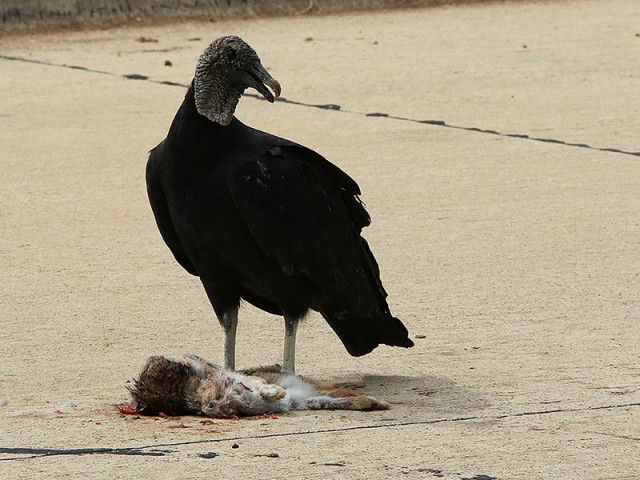


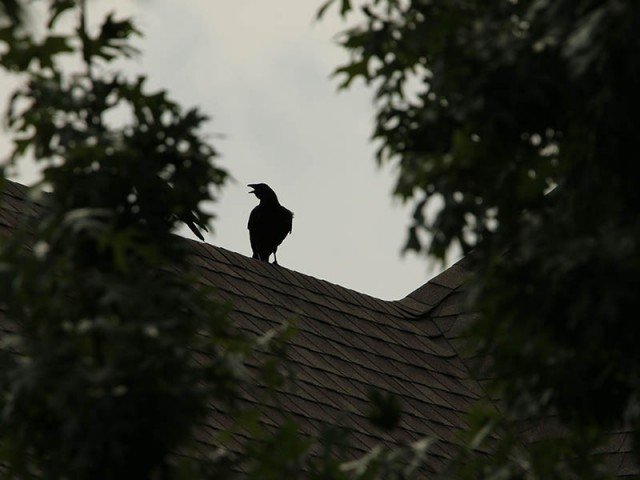



Early in the morning or late in the evening are good times to observe urban wildlife. The only problem is that low light conditions can often make capturing pictures of these twilight dwelling creatures a little bit difficult. But sometimes an encounter is unique or special enough to merit a photograph even when you know the results will not be optimal. Here are a couple of examples:


When the sun comes back out again, so do the reptiles. In neighborhoods around Dallas/Fort Worth that usually means Green Anoles. These are the charming little green (and sometimes brown—they can change colors) lizards you find in your landscaping and gardens. The acrobatic Green Anole are much more active and engaging than what you might first expect from a small reptile. They climb and jump. They look you in the eye, and you can see the cogs turning as they calculate their next move.






One of the most interesting finds around the house was the discovery of a Cooper’s Hawk nest in one of our neighborhood parks. Towards the end of June, as her offspring were preparing to leave the nest for the first time, momma hawk became antsy and began dive-bombing people passing through the park. Her aggressive behavior lasted for several weeks as the fledgling hawks worked to develop their flying skills. This made for some humorous posts on our neighborhood message board!
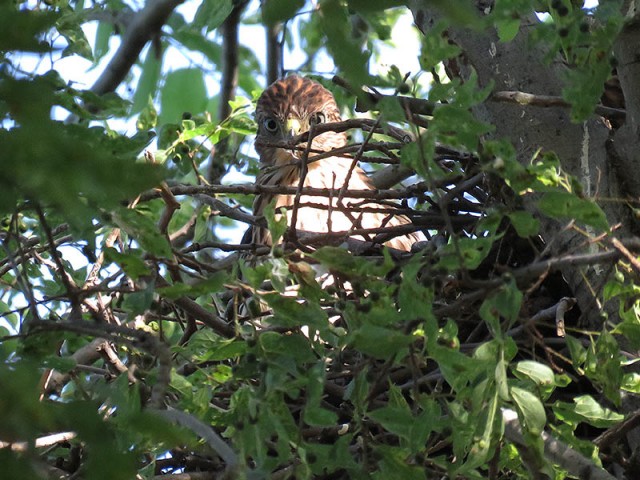


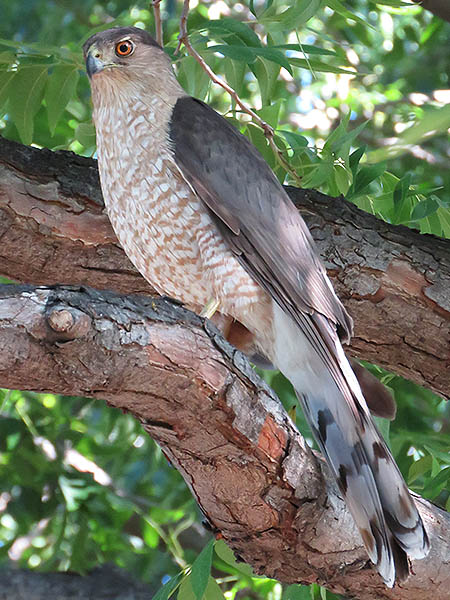
The highlight of this discovery might have been the day I caught all four of the siblings perched side-by-side on the back of a park bench. A truly special moment.

I walked the dogs by the park almost every morning, to check on their progress. Some mornings I would find the youngsters playing and chasing each other—generally over a scrap of food mom had provided. Everyday the young hawks would wander further and further from the nest. By the end of July the fledglings had dispersed. I only see them occasionally these days.
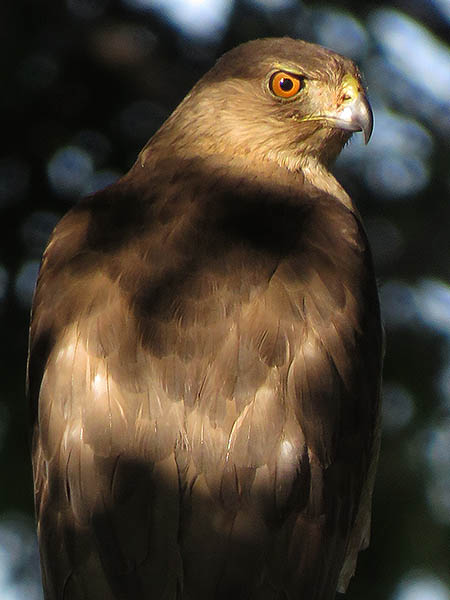
We see plenty of Eastern Cottontails on our dogs walks. There must be hundreds of them living in our neighborhood. Finding a rabbit might be the highlight of each walk for Britney and Shadow. The pups want to give chase so much, it makes me feel guilty for restraining them with their leashes. The cottontails, for their part, are so used to people and dogs coming and going that they often do not give the pups a second look as we pass by.



Small birds are some of the most readily observable wildlife in the suburban setting. Here are just a few of the birds you can expect to see in a typical Dallas/Fort Worth neighborhood:








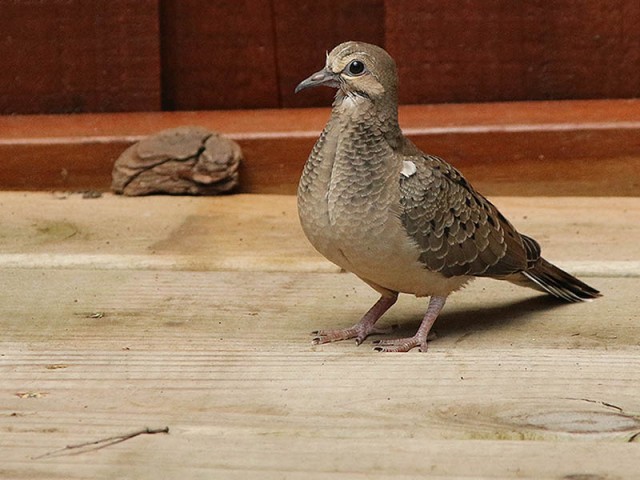


Just a short distance away from the house I found a pair of Red-tailed Hawks nesting in the most unlikely of places. At Hebron High School there is a single large tree rising from the middle of the student parking lot. Inexplicitly, this is where these two birds of prey chose to raise their brood. The student body remained blissfully unaware of the drama playing out above their heads every morning.


I stopped by the school just often enough to check on the hawks’ progress. On my last stop, I observed the fledgling redtails branching away from the nest.


Coincidentally, the mascot of Hebron High School is the Hawk… Go Hebron Hawks!

As is the case with many neighborhoods in North Texas, Fox Squirrels provide the entertainment in our yards with their charming antics. Silly and engaging, these little rodents never fail to make us smile.




One morning when I was out walking the dogs, I was surprised to discover this rare piebald Fox Squirrel. Now this is something you don’t see every day—even in a place with a high squirrel population density. This is a real, honest-to-goodness urban wildlife oddity. I still see this little guy out and about on occasion, but I cannot count on seeing him every time I pass through his part of the neighborhood.




I’ll close this article with just a few odds and ends—both found on my patio:

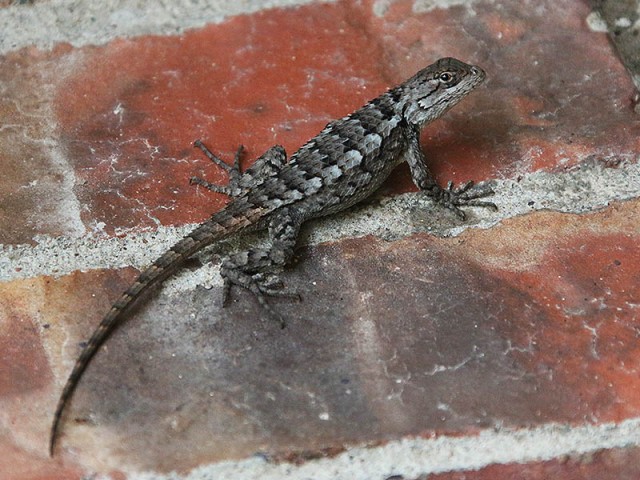




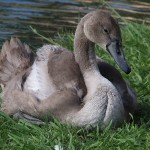


What a wonderful round-up of local critters, Chris. Nice to see the blog back in action. And the pups are cute enough that I guess we’ll have to forgive them for taking you away from blogging.
Enjoyed the post, Chris. 🙂
What a treat to read your post this, my birthday morning. I love the dogs, and l the other critters. I’ve never heard of The ríebald squirrel. You made my day. Thanks so much.
I’m glad you liked it, Linda!
-Chris
Love the pictures, specially the one of the Cooper siblings!
What beautiful pictures! Thank you for posting!